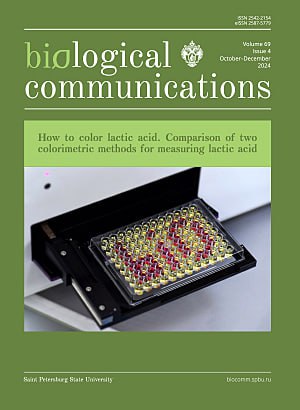Lactate determination with ferric ions in biological liquids is restricted to high concentrations or samples with controlled composition
DOI:
https://doi.org/10.21638/spbu03.2024.401Abstract
Lactic acid enantiomers, both L- and D-, are markers that often need to be controlled in such areas as medicine, food industry and related microbiological research. Besides the enzymatic methods for highly selective and stereospecific lactate determination, simpler alternatives with lower selectivity have been proposed. The spectrophotometric method involving ferric, i. e. iron(III), ions forming complexes with lactate has recently become popular for measurement of lactic acid in complex biological samples, although it has never been tested for selectivity under various conditions. Here we estimated the influence of some other common metabolites on readout of the method and showed that identical concentrations of some carboxylic acids, such as pyruvate and citrate, produce very similar color reactions as lactate. Although amino acids demonstrated lower interference, their combined influence in biological fluids can also have a substantial effect on this analytical reaction. This method is often used for the study of microbiological culture media, and it returned higher lactate estimates specifically at low lactate concentrations in LB growth medium due to one of its components, yeast extract. Thus, this method for lactate measurement requires some a priori knowledge about the amounts of interfering substances in the tested biological mixtures for its correct application.
Keywords:
growth medium, FeCl3, ferric ions, lactate, lactic acidosis
Downloads
References
Downloads
Published
How to Cite
License
Articles of Biological Communications are open access distributed under the terms of the License Agreement with Saint Petersburg State University, which permits to the authors unrestricted distribution and self-archiving free of charge.





